
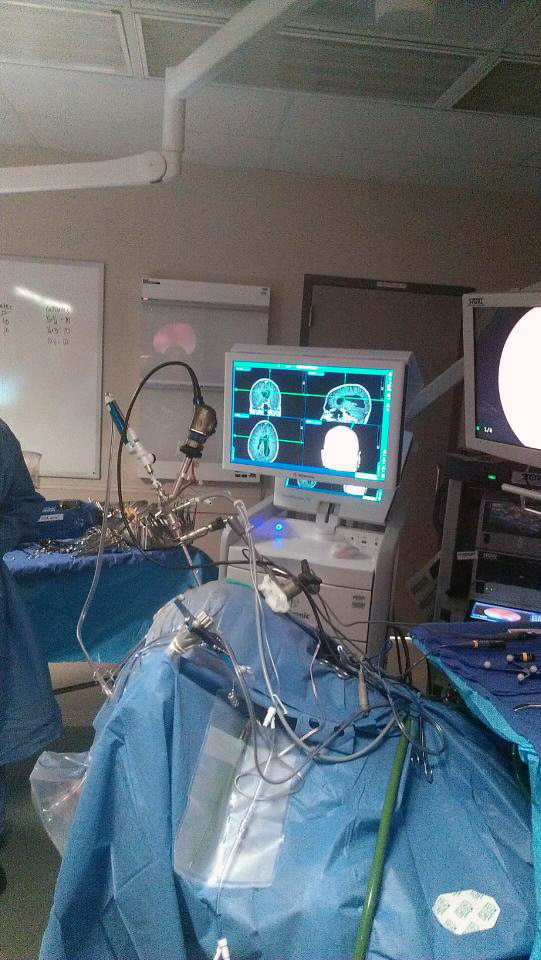
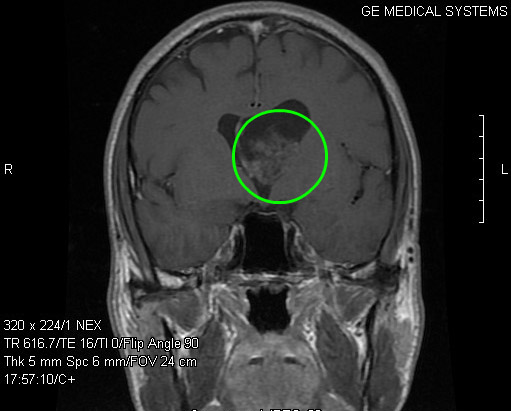
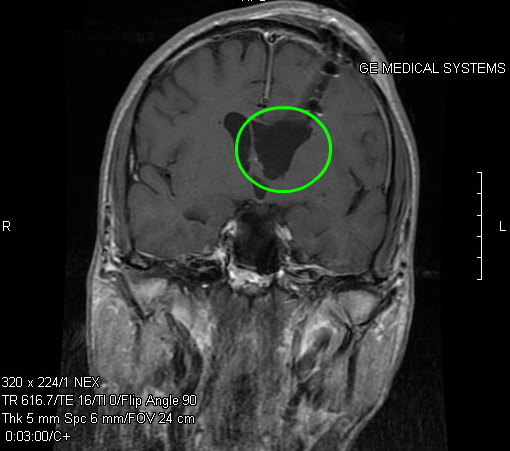
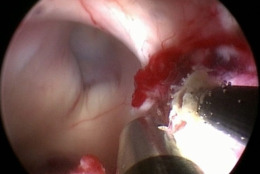
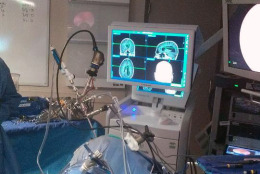


WASHINGTON – Some may call Sam Sandler a walking, talking miracle man.
He survived a massive tumor deep in his brain. And he did it in a very high-tech sort of way.
Sandler was one of the first patients to get a new type of minimally-invasive brain surgery at George Washington University Hospital. It combines a surgeon’s deft skill with the latest in fiber optic and computer technology.
Dr. Zachary Litvack, an assistant professor of neurosurgery at GWU, says it’s a big change from traditional brain surgery, which requires the removal of a large portion of the skull.
“We’ve been able to take a procedure that often required literally an incision from ear to ear and removing a fifth or a quarter of the skull, down to a two-inch or less incision and a single hole in the skull the size of a nickel,” he says.
That’s just big enough to pass an endoscope — a fiber-optic rod roughly the diameter of a pencil — into the brain. The high definition endoscope with a teeny camera is used to reach the tumor. Litvack says the endoscope he works with in the operating room can also act as a conduit for delicate instruments which then remove the tumor bit by bit.
High-definition computer imaging — a CT scan or MRI — provides the surgeon with a road map of the brain in real time.
“Kind of like GPS for the patient but a little more accurate than the Tom Tom in your car,” Litvack explains.
It is painstaking surgery for the doctor, but far less invasive for the patient, reducing the risk of trauma to delicate brain tissue.
As a result, hospital stays are much shorter and recovery times are far faster. Sandler, for example, had surgery on Tuesday and was out of the hospital by Friday. He was able to work from home two weeks into his recovery, but Litvack says some of his patients are back at work much sooner.
For now, the procedure is used primarily to treat deep-seated tumors within the ventricle, or the base, of the brain. It can’t be done for every tumor yet, but Litvack says the technique and the devices used are evolving.
“We are kind of right on the cusp, I think, of it exploding and becoming more commonplace,” he says.
Litvack says he is amazed by the changes technology has brought to brain surgery just in the last 10 years or so. And he predicts by the end of his career, neurosurgery will have advanced to the point where it looks nothing like it does today.
Follow @WTOPLiving on Twitter.







